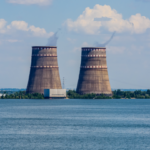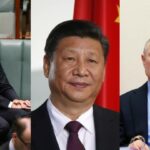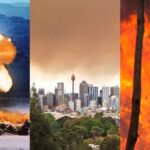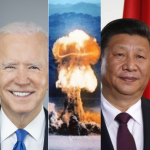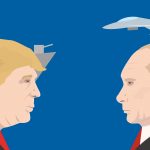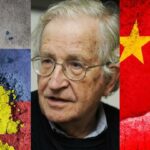“This Is Not a Bluff”: Nuclear War Draws Closer as Putin’s Threats Escalate
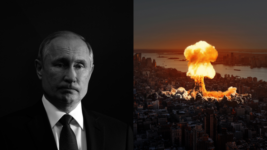
“In the event of a threat to the territorial integrity of our country and to defend Russia and our people, we will certainly make use of all weapon systems available to us,” said Russian president Vladimir Putin in an address to his nation on 21 September.
“This is not a bluff,” he added.
By “all weapons available to us” Putin means nuclear weapons. Indeed, right before he made the statement, the Russian president accussed high-ranking NATO representatives of having the intention to use such weapons upon his country.
The president’s renewed threat to deploy atom-splitting weapons comes after Ukrainian forces recently made significant gains against the Russian army, which, on 23 February, launched an invasion of the neighbouring country that used to be a part of the Soviet Union.
During his address, Putin also outlined that his nation isn’t simply at war with Ukraine but is rather facing the might of “the entire military machine of the collective west”, which is no exaggeration as other nations, especially the US, have funnelled billions of dollars’ worth of military support to Kyiv.
Nuclear threats aplenty
In the early days of the Russian invasion of Ukraine, its forces commenced attacking the Zaporizhzhia nuclear power plant: the largest such facility in Europe. By March, Moscow had taken control of it, and whilst this continues, its Ukrainian engineers maintaining its operation.
Fighting around the plant is ongoing, with both sides blaming the other for the shelling. And as the facility’s walls are reinforced, the real danger is if electricity is cut to its six reactors, as meltdown would then occur, resulting in a disaster like that of Chernobyl, which happened in Ukraine in 1986.
The International Atomic Energy Agency (IAEA) sent in an inspection team to assess the crisis early this month, after the plant had been cut off from the main grid, with its backups having kicked in to prevent a radioactive catastrophe.
All four of the facility’s connections to the power grid have been cut at one time during the war, as have all three backup power lines.
The IAEA announced on 18 September that all power lines are now back in operation. However, Russian forces carried out a new attack on Zaporizhzhia city on the 23rd.
Pushing the button
Russia has the largest nuclear arsenal on the planet, followed by the US. The Russian leader’s threats to use his nation’s weapons commenced on invasion of its neighbour, when he made a veiled threat to the rest of the planet not to interfere or he’d respond with consequences never seen before.
Putin then put his nation’s nuclear arsenal on high alert in late February, while Russia carried out simulated nuclear weapon launches in May. And the following month saw the president make further statements regarding using such weapons to defend Russian sovereignty.
Just days before Putin made his recent “not a bluff” statement, a journalist asked the US president what he’d say to the Russian head of state if he is considering using nuclear weapons, and Joe Biden responded “Don’t. Don’t. Don’t. It would change the face of war unlike anything since World War II.”


